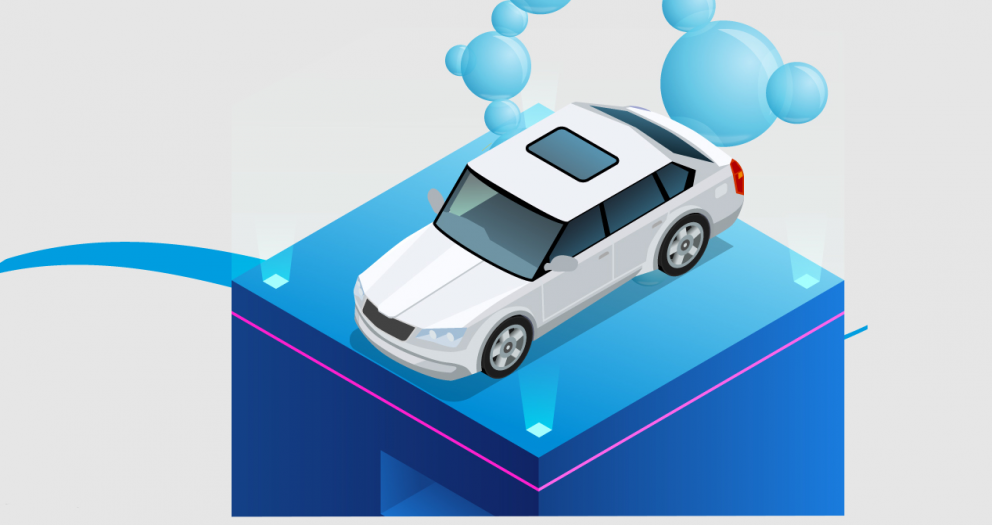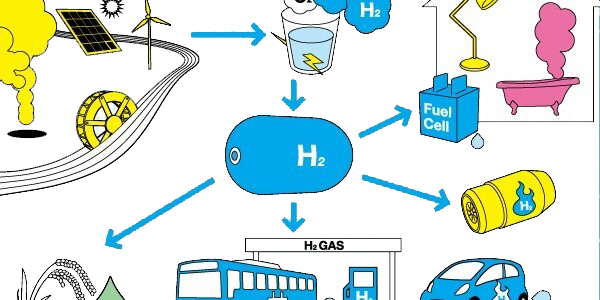Here follows a summary of salient dates of the studies and the results obtained in the field of hydrogen and its application to motors start from 1766 right up to the present day.
In 1875 - Jules Verne in his book The Mysterious Island, wrote the following sentence: "" Water decomposed into its primitive elements, and decomposed doubtless by electricity, which has become, then, a powerful force and manageable. Yes, my friends, I think the water one day, can be used as fuel. '"
Only in 1888 there were answers to the numerous questions about the HHO gas that scientists had set at the start of 1800.
In 1918 - Charles H. Frazer patented the first "" Booster hydrogen "," system of internal combustion engines. U.S. Patent. No. 1,262,034. Frazer said that his invention: 1 - Increase the efficiency of internal combustion engines. 2 - one has the complete combustion of hydrocarbons. 3 - the engine remains cleaner. 4 - You can use less fuel for the same performance.
In 1935, the Inventor Henry Garrett patented an electrolytic carburetor and made it work a machine with tap water.
Between 1943 and 1945, at the end of World War II and because of the severe shortage of conventional fuel, the British army used generators torches in their tanks, boats and other vehicles for better mileage and prevent overheating motor vehicles used in Africa. Used generators that look a bit 'to today's HHO fuel savers. Immediately after the war the government ordered to remove and destroy all the generators from the vehicles.
In 1962, William A. Rhodes (USA) was the first inventor known to patent an electrolyzer that produced the simple gas "" single-channeled "" we now call "" Brown's gas "." In the mid-1960's Mr. Rhodes founded a company, Henes Corp., This was a serious error because Rhodes had not yet carried out an efficient design. the Henes Corp. then failed, passed through several hands and was acquired by Dennis McMurray. The company, now named Arizona Hydrogen, is making a fortune in Phoenix, Arizona, USA.
After the Second World War have survived at least a couple of generators. In mid-1970, a German company named Lötgerat produced generators blowtorch. Were used all new materials and components, with the exception of the group generator. They were, of course, made of solid steel. Made the same way as all the equipment of the army built to last.
1974 - Ten years after the patent of William Rhodes, Yull Brown (1922-1998), originally a Bulgarian student named Ilya Velbov, then Australia, filed a patent for his design of a Brown's gas electrolyzer and spent the rest of his life trying to make Brown's gas a commercial success. Were spent approximately $ 30 million and employed nearly 30 years in this effort. Thanks to him and to his efforts, a company bearing his name, remembering: Several companies have been launched both in cooperation and in competition with Yull Brown. Today, this particular gas is called "" Brown's gas ""
In 1977 - NASA Lewis Research Center has conducted a series of tests using a large block American made V8 piston engine, fully instrumented and mounted on a test bench. The results were surprising. They have also proposed an alternative method to produce the gas, which is more efficient than normal electrolysis. Document NASA: NASA TN D-8478 C.1 of May 1977 The name of the white paper is "" emissions and total energy consumption of an engine piston multicylinder petrol and hydrogen GASOLINE MIXTURE "."
In 1990, Juan Carlos Aquero patented a system of energy transformation for internal combustion engines, which used the oxygen-hydrogen and steam. European patent: 0405919 A1 / 90306988.8 (26/06/1990). Also, in 1990, Mr. Stanley A. Meyer obtained a patent on a method for the production of a gas of hydrogen-oxygen fuel. Patent Number: 4936961-26 June 1990. What made it very special was the dielectric resonant circuit. Mr. Stanley Meyer has designed an engine with only water as fuel.
In 1991, Kim Sang Nam, Korea, visited the laboratory of Yull Brown in the suburbs of Sydney. This was the beginning of his collaboration with Brown and now Best Korea and together they managed to develop innovative technologies for the Brown Gas. Today B.E.S.T. Korea together to B.E.S.T. Norinco, based in Bautou, China, is one of the world's largest producers of original gas generators.
As late as 1991 the Teslalein Research, a small company in the Netherlands, began work on the research on gas Brown.
In 1994, the Eagle-Research, George Wiseman, Canada, embarked on a program of independent research on Brown's Gas. Formed the basis of the technology of 'the traditional electrolyzer, and drew upon himself the research in alternative energy obtaining a better design of the electrolyzer. William Rhodes has reviewed and confirmed the technology of Brown's gas.
In 2003 - Richard Bird, dell'Hydrotechnix begins to experiment with Brown's Gas.
In 2006 mr. Dennis J. Klein and mr. R.M. Santilli in Florida, USA, were granted a patent for a "" apparatus and method for the conversion of water into a new form and gaseous fuel and the fuel gas thus formed. "" U.S. Patent No. 2006/0075683 A1. The gas produced is called HHO.
In 2008, the market for gas generators Brown and HHO fuel savers seems to be booming. Born several new manufacturers and distributors. The quality of the generators varies. It has been shown that the internal combustion engines with enhanced oxygen / hydrogen HHO may work better using non-conventional fuels and generate much less air pollution.
In May 2008, in Portugal, the first 300 diesel trucks have had a significant fuel economy with the system hydrogen / oxygen. Later, the same technology will be used on school buses in Canada and the Best Korea officially introduce its products in Europe.



